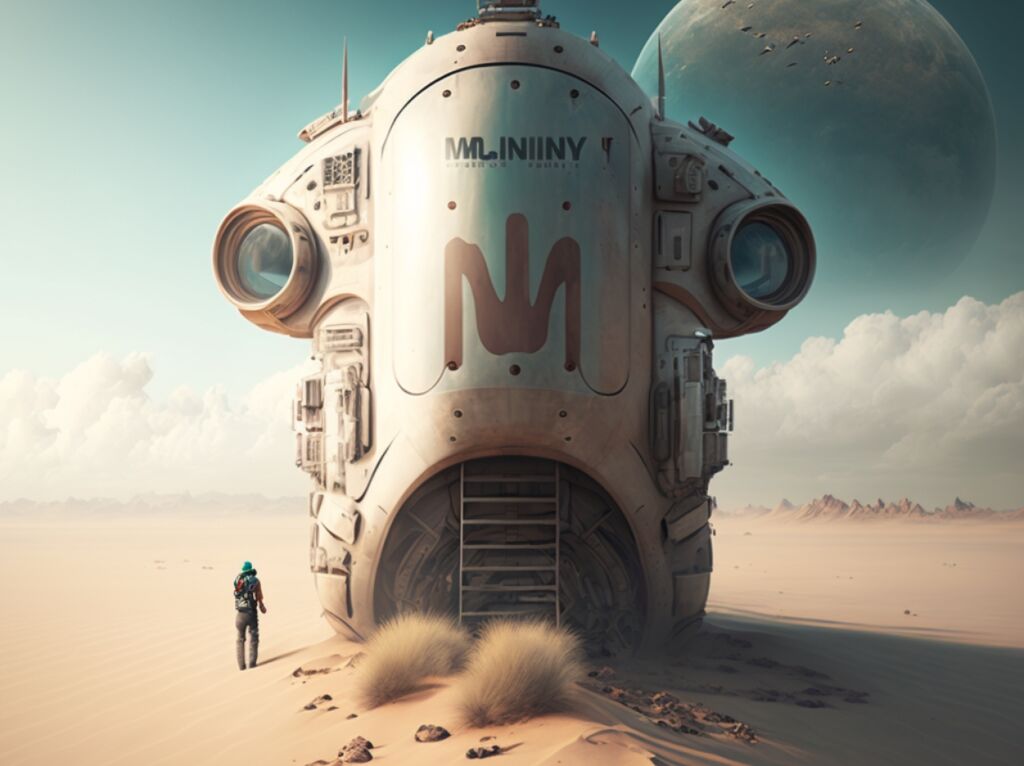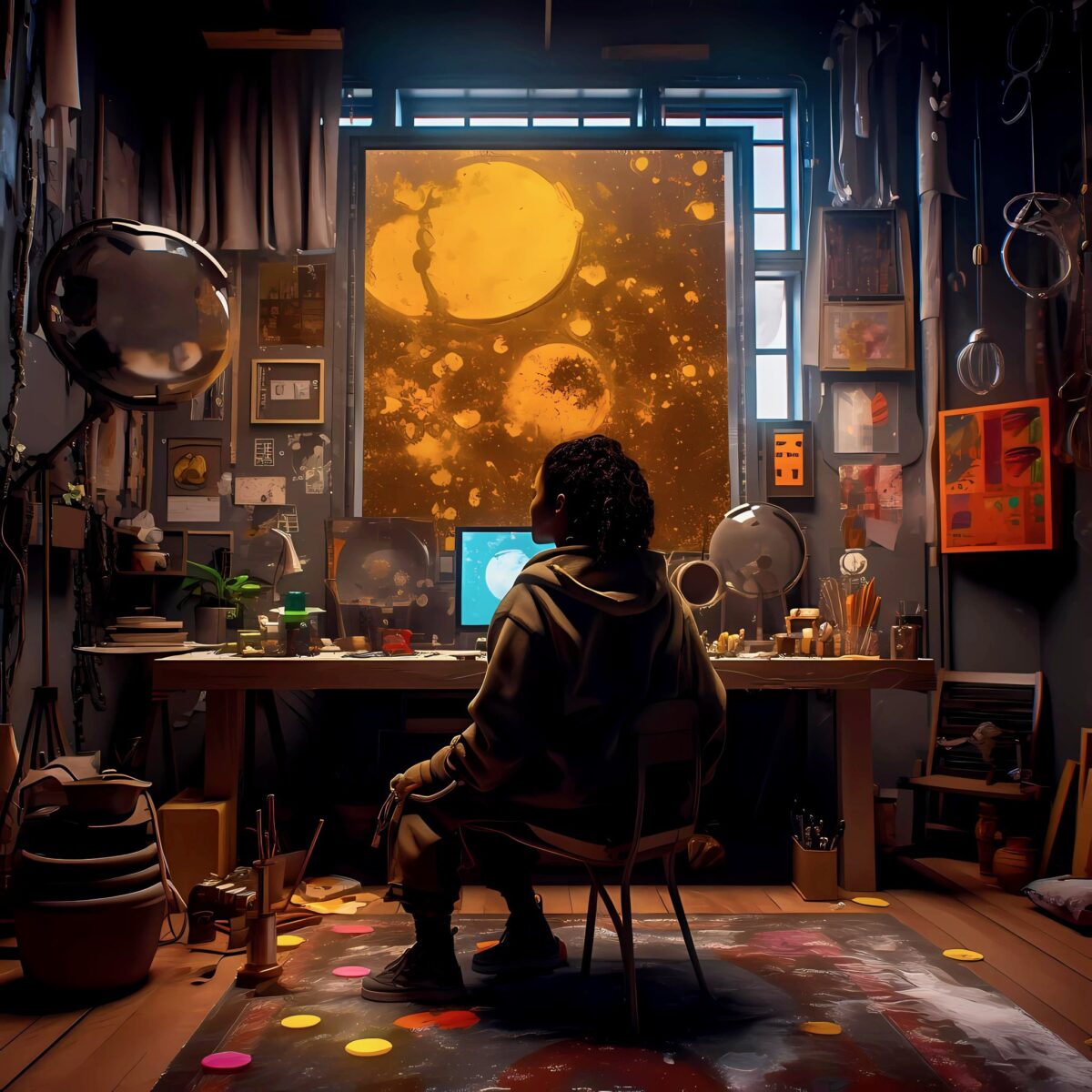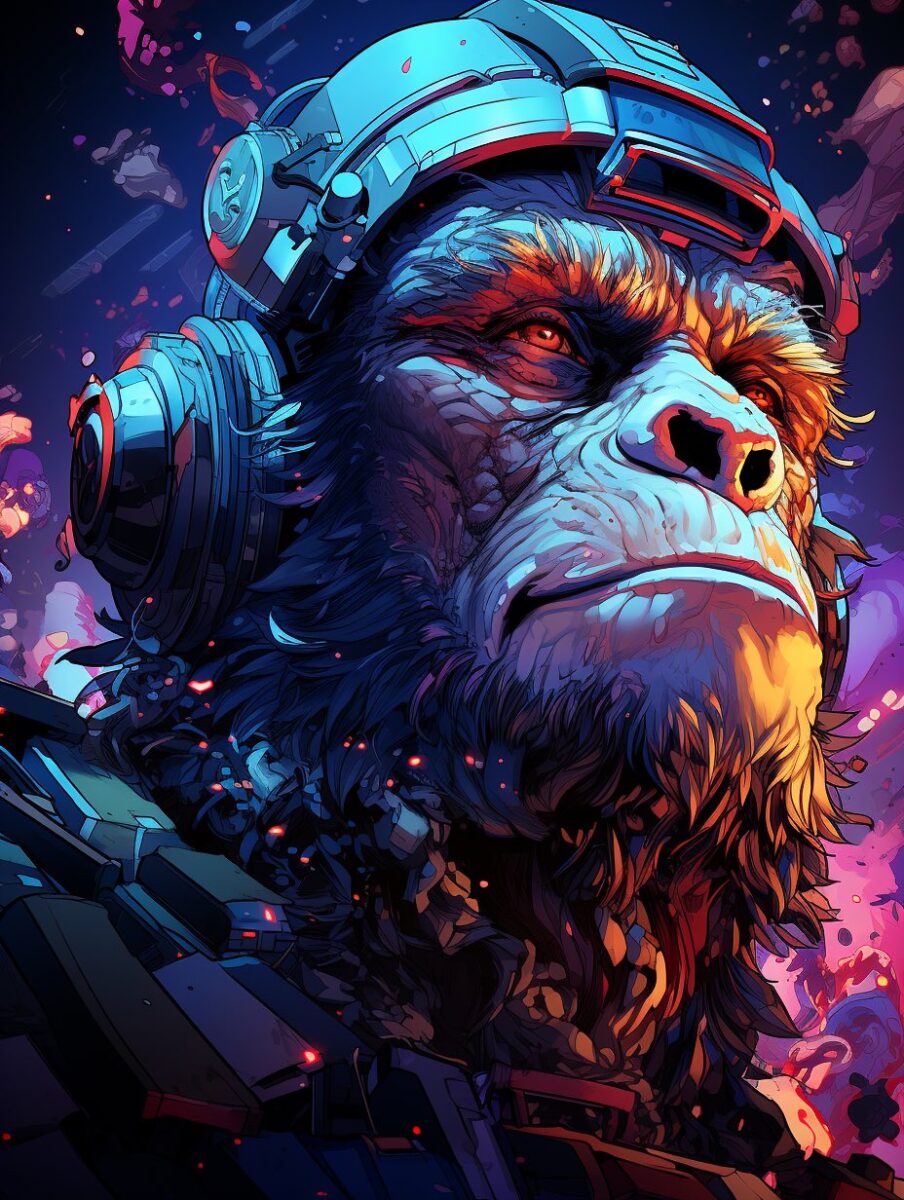Introduction: The Allure of Neural Networks
Why Neural Networks are the Rockstars of AI
Step right up and welcome to the dazzling world of neural networks, the rockstars of the AI universe! If artificial intelligence were a concert, neural networks would be the headlining act, dazzling the crowd with their intricate and powerful performances. But what exactly makes these neural networks so captivating? And can you, yes you, create them in Python? Spoiler alert: Absolutely!
Imagine a neural network as a brilliant artist, capable of painting masterpieces from numbers and data. These aren’t your average paintings, though; they’re dynamic, evolving creations that can recognize faces, translate languages, and even drive cars. Neural networks achieve this by mimicking the workings of the human brain, albeit in a simplified form. It’s like having a mini-brain on your computer, minus the need for coffee breaks.

Now, you might be thinking, “That sounds complex and a bit intimidating.” True, neural networks are no walk in the park, but here’s the kicker: they’re not as impenetrable as they might seem. Especially when you have Python in your toolkit. Python, with its straightforward syntax and a plethora of helpful libraries, makes diving into neural networks more like a gentle swim in a lake rather than a plunge into the ocean.
In this digital age, understanding neural networks isn’t just a neat party trick; it’s a window into the future. These neural networks are at the heart of countless modern innovations – from intelligent personal assistants to life-saving medical diagnostics. They’re the secret sauce behind many of the technologies we now take for granted.
So, as we embark on this adventure together, let’s demystify these neural networks. We’ll peel back the layers (pun intended) to reveal the inner workings of these fascinating constructs. We’ll explore their anatomy, understand their functions, and most importantly, we’ll guide you through creating your very own neural network in Python.
Whether you’re a budding programmer, a curious technophile, or just someone fascinated by the wonders of AI, you’re in the right place. Get ready to unlock the secrets of neural networks, Python style. It’s going to be an enlightening, challenging, and yes, fun journey. Let’s get started!
The Building Blocks: Understanding Neural Network Basics
Anatomy of a Neural Network
Now, let’s roll up our digital sleeves and get to the heart of what makes neural networks tick. Understanding these fundamentals is like learning the chords on a guitar before you can play a melody. It might not be as glamorous as the solo, but it’s essential for making beautiful music.
Neurons: The Building Blocks
Think of neurons as the tiny, buzzing bees of a neural network. In a human brain, neurons fire off electrical signals in response to stimuli. In a neural network, artificial neurons (or nodes) do something similar. They receive input data, process it, and pass on their output to the next layer of neurons. It’s a bit like a game of digital whisper-down-the-lane, with each neuron adding its twist to the message.
Layers: The Structure of Complexity
In neural networks, neurons are arranged in layers. There’s the input layer, where the data enters the network, and the output layer, where you get your results. Sandwiched in between are hidden layers, where the real magic happens. These layers can be thought of as the chefs in a kitchen, each adding their own ingredients and techniques to create the final dish.
Activation Functions: The Decision Makers
Activation functions in a neural network are like the gatekeepers, deciding how much information should pass through to the next layer. They determine whether a neuron should be activated or not, based on the input it receives. It’s akin to a bouncer at a club, deciding who gets in and who doesn’t, based on certain criteria.
Weights and Biases: The Fine Tuners
Weights in a neural network are like the dials on a mixing board, adjusting the strength of the input signals. Biases, on the other hand, are like adding a baseline to the mix, ensuring even the quieter signals have a chance to be heard. Together, weights and biases are fine-tuned through a process called training, where the neural network learns from data to make better predictions.
Training: The Learning Process
Training a neural network involves feeding it data and letting it adjust its weights and biases to improve accuracy. It’s like teaching a child to ride a bike; at first, they wobble and might take a few falls (mistakes), but with practice, they get better and better.
Understanding these basics sets the stage for the real excitement: creating your own neural network in Python. It’s a process that combines these elements into a symphony of data-crunching power. Up next, we’ll delve into why Python is the perfect conductor for this symphony, leading us through the creation of a neural network with clarity and ease. Stay tuned, the best is yet to come!


Python & Neural Networks: A Match Made in Heaven
Why Python is the Ideal Language for Neural Networks
As we journey further into the realm of neural networks, let’s talk about Python – the trusty steed in this adventure. Why is Python often hailed as the go-to language for creating neural networks? It’s not just because it’s trendy; it’s because Python really makes things simpler in the complex world of neural networks.
Simplicity is Key
First off, Python is renowned for its simplicity and readability. It’s like the friendly tour guide in the world of programming languages, holding your hand through complex concepts. This readability makes Python an ideal candidate for beginners and experts alike. It’s like writing a recipe in plain English rather than in cryptic chef lingo.
Rich Libraries at Your Disposal
Python’s strength in neural network development also lies in its rich ecosystem of libraries. Think of libraries as toolkits, each brimming with pre-written code that you can use to build your neural network. For instance, TensorFlow and Keras are like the Swiss Army knives of neural network libraries, offering a range of tools to simplify the process of building and training models.
Community Support: The Helpful Neighbor
The Python community is like a bustling marketplace, full of experienced developers and enthusiasts who are more than willing to help. Whether it’s a bug you can’t squash or a concept you can’t wrap your head around, there’s likely someone in the Python community who’s been there and can offer advice. This community support is invaluable, especially when venturing into the intricate world of neural networks.
Flexibility and Integration
Python also offers incredible flexibility. Whether you’re working with large datasets, integrating with other software, or experimenting with different algorithms, Python is like the all-terrain vehicle of programming languages – ready for any challenge. Its ability to integrate with other tools and systems makes it a versatile choice for neural network development.

Perfect for Prototyping and Experimentation
Lastly, Python is great for prototyping and experimentation. With Python, testing and tweaking your neural network models is like playing with Lego – you can quickly assemble, disassemble, and reassemble your models to explore different architectures and approaches.
In essence, Python isn’t just a programming language; it’s the backbone of many neural network projects, providing a foundation that’s sturdy yet flexible. As we gear up to dive into building your first neural network in Python, remember that you’re wielding a powerful tool, one that’s beloved by beginners and pros alike for good reason.
Up next, we’re going to get our hands dirty (digitally, of course) and walk you through creating your very own neural network in Python. It’s where theory meets practice, and where you get to see the magic happen.
Hands-On Time: Building Your First Neural Network in Python
A Step-by-Step Guide to Your First Model
Let’s dive into the practical aspect of building your first neural network in Python. This guide is designed to walk you through the process in detail, from start to finish. Imagine you’re assembling a model airplane. Each step is crucial to ensure that the final product can take off smoothly.
Step 1: Setting Up Your Environment
- Install Python: Ensure you have Python installed on your computer. Python 3.x versions are preferable for better compatibility with libraries.
- Install Libraries: Next, install the necessary libraries. TensorFlow and Keras will be our main tools. You can install them using pip, Python’s package installer. Open your command line and type:
pip install tensorflow keras.
Step 2: Importing Libraries
- Start Your Python Script: Open your Python IDE or a Jupyter notebook.
- Import Libraries: At the top of your script, import the necessary modules:pythonCopy code
import tensorflow as tf from tensorflow.keras.datasets import mnist from tensorflow.keras.models import Sequential from tensorflow.keras.layers import Dense, Flatten from tensorflow.keras.utils import to_categorical
Step 3: Preparing the Data
- Load the Dataset: The MNIST dataset is a collection of handwritten digits. Load it using Keras:pythonCopy code
(train_images, train_labels), (test_images, test_labels) = mnist.load_data() - Normalize and Reshape Data: Normalize the image data to make the neural network training more efficient:pythonCopy code
train_images = train_images.reshape((60000, 28 * 28)) train_images = train_images.astype('float32') / 255 test_images = test_images.reshape((10000, 28 * 28)) test_images = test_images.astype('float32') / 255 - Categorize the Labels: Convert the labels into categories:pythonCopy code
train_labels = to_categorical(train_labels) test_labels = to_categorical(test_labels)
Step 4: Building the Neural Network
- Create the Model: Initialize a sequential model and add layers:pythonCopy code
model = Sequential() model.add(Flatten(input_shape=(28 * 28,))) model.add(Dense(512, activation='relu')) model.add(Dense(10, activation='softmax')) - Flatten Layer: This layer flattens the input data.
- Dense Layers: These are fully connected layers. The first Dense layer has 512 nodes. The second Dense layer, the output layer, has 10 nodes (one for each digit).
Step 5: Compiling the Model
- Compile the Model: Choose an optimizer, a loss function, and metrics:pythonCopy code
model.compile(optimizer='rmsprop', loss='categorical_crossentropy', metrics=['accuracy'])
Step 6: Training the Model
- Fit the Model: Train the model with the training data:pythonCopy code
model.fit(train_images, train_labels, epochs=5, batch_size=128)
Step 7: Evaluating the Model
- Test the Model: Finally, evaluate the model’s performance on the test data:pythonCopy code
test_loss, test_acc = model.evaluate(test_images, test_labels) print('Test Accuracy:', test_acc)
And there you have it! You’ve just built and trained your first neural network in Python. It’s a simple yet effective model that can recognize handwritten digits. The beauty of neural networks in Python is their flexibility – you can tweak the architecture, play with the hyperparameters, and experiment with different datasets.

In the next section, we’ll delve into the art of troubleshooting and improving your neural network. It’s all about refining your model to enhance its performance and accuracy.
Troubleshooting and Improving Your Neural Network
Overcoming Common Challenges
Building your first neural network is an accomplishment, but the journey doesn’t end there. Often, the first model is just the starting point. Like a first draft in writing, it needs revision and refinement. Let’s explore some common challenges you might face and how to address them, turning your neural network from a rough sketch into a masterpiece.
Issue 1: Overfitting – When Your Model Knows Too Much
- Symptom: Your model performs exceptionally well on training data but poorly on new, unseen data.
- Solution: Simplify your model by reducing the number of layers or neurons. Consider using dropout layers, which randomly ignore a subset of neurons during training, preventing the model from becoming too reliant on the training data.
Issue 2: Underfitting – When Your Model Is Too Shy
- Symptom: Your model performs poorly on both training and test data.
- Solution: This could be a sign that your model is too simple. Try increasing the complexity by adding more layers or neurons. Also, ensure your data is feature-rich and the model is trained for enough epochs.
Issue 3: Slow Learning – When Your Model Is a Slowpoke
- Symptom: Training takes a long time, and improvements are minimal.
- Solution: Experiment with different optimization algorithms (like ‘adam’, ‘sgd’, or ‘rmsprop’) and learning rates. Sometimes, tweaking these can significantly speed up learning.
Issue 4: Data Issues – Garbage In, Garbage Out
- Symptom: Poor performance that’s hard to diagnose.
- Solution: Inspect and preprocess your data. Ensure it’s clean, well-structured, and appropriately normalized. Remember, the quality of your data profoundly impacts your model.
Issue 5: Plateauing Accuracy – When Your Model Hits a Wall
- Symptom: Your model’s accuracy stops improving after a certain point.
- Solution: Try changing the activation functions or initialization methods for your neurons. Batch normalization layers might also help by stabilizing the learning process.
Regular Checks and Balances
- Monitoring: Regularly monitor the performance of your model during training. Use visual tools like TensorBoard to track metrics like loss and accuracy.
- Validation Sets: Use a validation set (a subset of your training data) to evaluate your model during training. This helps in spotting overfitting early.
Experimentation is Key
Machine learning, and neural networks, in particular, are as much an art as they are a science. Don’t be afraid to experiment with different architectures and parameters. Each dataset and problem is unique, and there’s no one-size-fits-all solution.
Beyond the Basics: Next Steps in Your Neural Network Journey
Pathways for Further Exploration
Congratulations on building and refining your first neural network! But as with any grand adventure, there’s always more to explore. The world of neural networks is vast and varied, and what you’ve experienced so far is just the tip of the iceberg. Let’s chart out the next steps in your neural network journey, guiding you towards deeper waters where more complex and fascinating challenges await.
1. Experiment with Different Types of Neural Networks
- Convolutional Neural Networks (CNNs): These are particularly good for image recognition and processing. If you enjoyed working with the MNIST dataset, CNNs will take your image-related projects to the next level.
- Recurrent Neural Networks (RNNs): Ideal for dealing with sequential data, like time series or natural language. If you’re interested in text generation, sentiment analysis, or even stock market prediction, RNNs are your go-to.
2. Tackle More Complex Projects
- Dive into more complex datasets or try building neural networks for different applications. You could explore areas like speech recognition, generative models, or reinforcement learning. Each of these domains presents unique challenges and learning opportunities.
3. Participate in Competitions and Collaborative Projects
- Platforms like Kaggle offer machine learning competitions that can challenge and hone your skills. Collaborating on open-source projects or contributing to ML communities can also accelerate your learning and help you apply your skills to real-world problems.
4. Deepen Your Theoretical Understanding
- While hands-on experience is crucial, a strong theoretical foundation will enhance your understanding and capabilities. Dive deeper into topics like optimization algorithms, backpropagation, and neural network architecture design. Resources like online courses, textbooks, and research papers can be invaluable.
5. Stay Updated and Network
- The field of AI and neural networks is rapidly evolving. Stay updated with the latest research and trends by following relevant blogs, attending webinars and conferences, and joining forums or social media groups focused on AI and machine learning.
6. Reflect and Set Goals
- Reflect on what aspects of neural networks you find most intriguing or rewarding. Setting specific goals, whether it’s mastering a particular type of neural network or applying ML to a field you’re passionate about, can provide direction and motivation for your continued learning.
Your journey in the world of neural networks is a personal and professional adventure that can be as rewarding as it is challenging. Each step forward opens new doors of possibilities, whether it’s solving complex problems, innovating in your field, or contributing to cutting-edge technology.
Remember, the journey of learning never truly ends. Each neural network you build, each problem you solve, adds to your repertoire of skills and knowledge. Keep exploring, keep experimenting, and most importantly, keep enjoying the journey! The world of neural networks is yours to discover.

As we draw the curtain on our exploration of neural networks in Python, it’s important to take a moment to reflect on the journey. You’ve traversed from understanding the basics of neural networks, through the intricacies of building and fine-tuning your models, to envisioning your future in this dynamic field. It’s been a path filled with learning, challenges, and undoubtedly, a bit of fun.
Embracing the Future
Looking ahead, the world of neural networks and AI is not just a field of study or a career path; it’s a landscape of endless possibilities. Whether it’s enhancing healthcare, revolutionizing transportation, or transforming the way we interact with technology, the applications of neural networks are vast and impactful. Your journey in this realm has the potential to contribute to these transformative changes.
Lifelong Learning
Remember, in the world of AI and neural networks, the learning never stops. Each project you undertake, each challenge you overcome, and each model you build adds to your expertise. Stay curious, keep exploring, and always be ready to adapt and learn. The field is constantly evolving, and so will your understanding and skills.
A Community of Explorers
Finally, remember that you’re not alone in this journey. The AI and machine learning community is a vibrant and supportive network of learners, educators, professionals, and enthusiasts. Engage with this community, share your experiences, learn from others, and perhaps, help guide those who are where you once were.
The Journey Continues
As this guide concludes, your journey does not. It’s just another beginning. With the foundations laid and your toolset equipped, you’re ready to dive deeper into the exciting and ever-evolving world of neural networks. Keep building, keep experimenting, and most importantly, keep enjoying every step of this fascinating journey.
The future of neural networks and AI is as bright and promising as the effort and passion you put into it.
